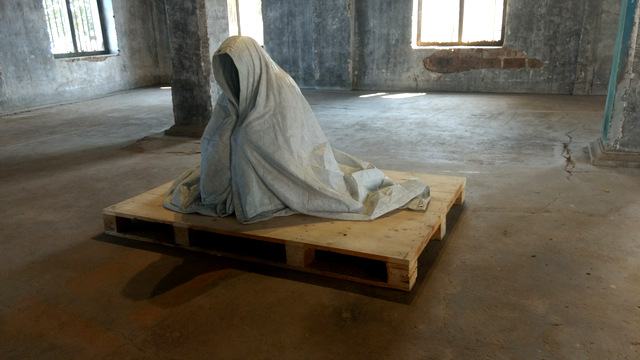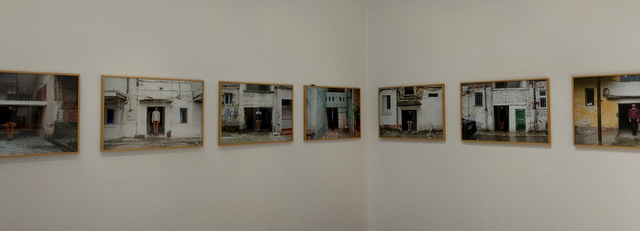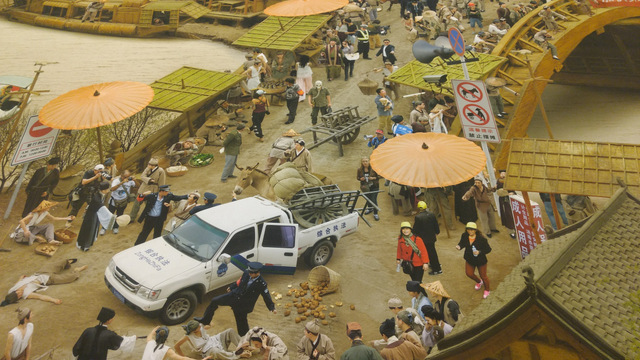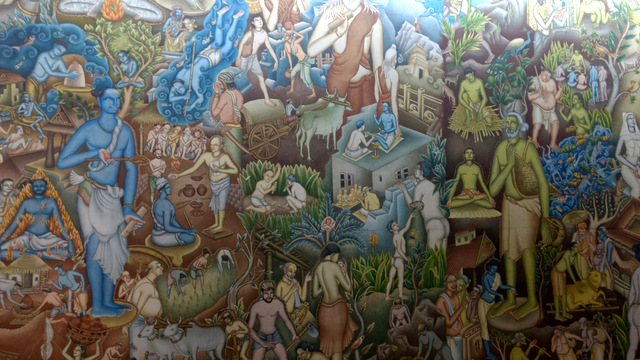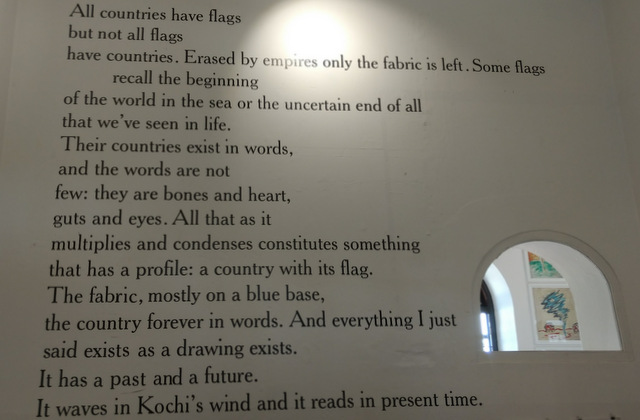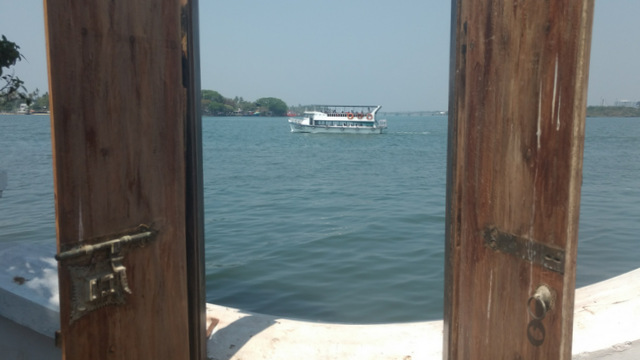Strips of cloth hang from a ceiling. Each one tells a story of loss and hope, of desires and aspirations. They are stories of people whose lives were touched by the Partition and the small room in the by-lane of Fort Kochi came alive with the whispering from their lives.
Two full days of traipsing around the delightful roads of Fort Kochi and Mattancherry, I had managed to cover the Kochi Muziris Biennale Venues consisting of 9 main venues, 9 student biennales and 7 collateral projects ; all dotted along the bylanes of Fort Kochi.
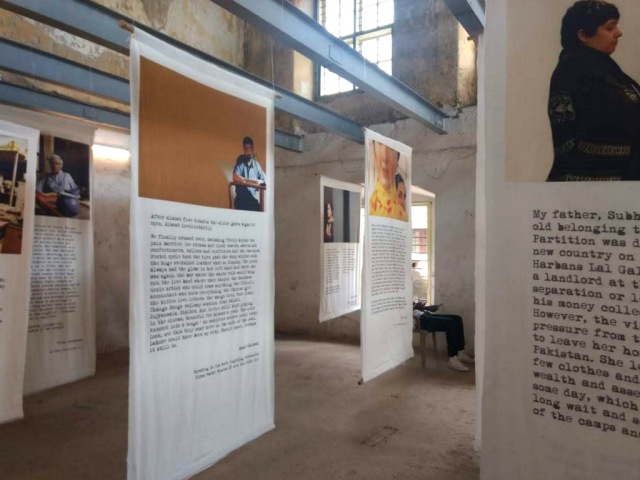
This year’s curator was Anita Dube, a well known artist and art-critic and as was evident from the concept, a lot of focus was given to showcase themes on feminism, the queer community, the voices of the marginalized in the society and the impact of Kerala floods.For those who intend to visit the Biennale, I present some of my favorite pieces, lest they don’t miss them and for those who cant visit, this is a short journey into the powerful experience that’s the Biennale.
Each art installation invites the viewer a peek into the very depths of an artists mind and one has to listen carefully and let the feeling wash over, to let the wisps of thoughts floating around seep in into your being.Many art pieces felt so intensely personal that for a moment, a pang of guilt washed over me, as it felt almost like I had tread over forbidden territory.
One of my favorites was the ‘From the far Side of the moon’, which is a black and white 13 minute animated movie by Radenko Milak (Aspin Wall). It depicts the bleak vision of the world in the nuclear age. As I sat in the small dark room , the black and white imagery was transfixing and brought forth the chilling bleakness after a nuclear explosion. There is no linear narrative, as the scenes change rapidly, interspersed with fragmented interview of Robert Oppenheimer, the father of the atomic bomb.
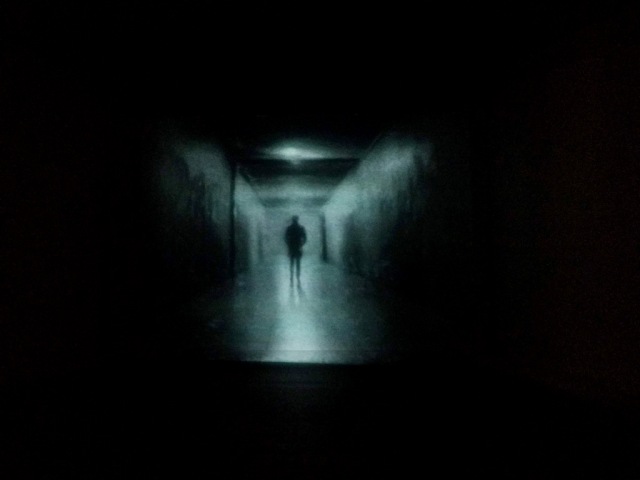

Stories of exploitation featured among many. ‘The Clothesline’ by Monica Mayer (Aspin Wall) featured the harrowing stories of sexual harassment of women. The messages displayed as anonymous postcards from a clothesline. It was heart breaking to read the stories of several women who were as young as 4 when they were exploited. A different take on women’s plight was ‘Guerrilla Women’ featuring a satirical but hard hitting realities on the inequalities faced by women in today’s world.
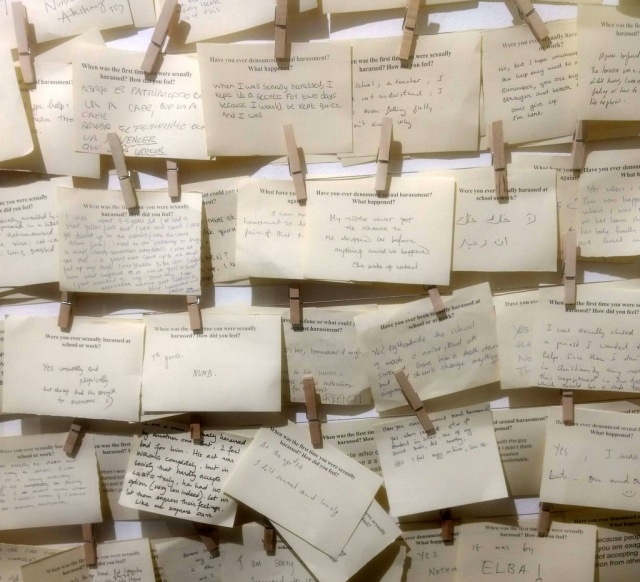
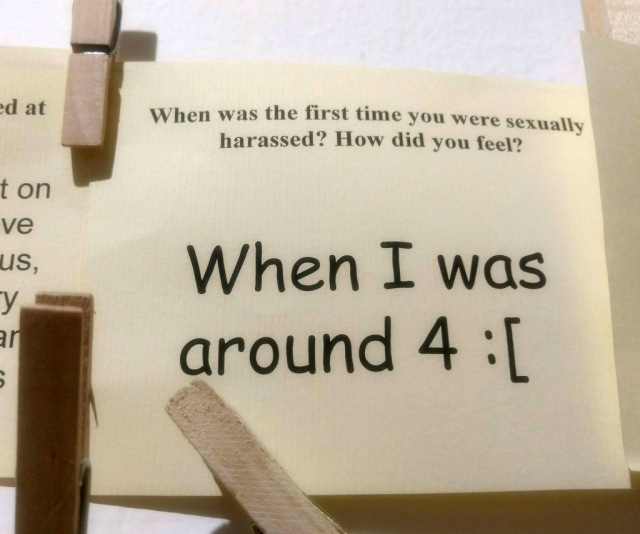
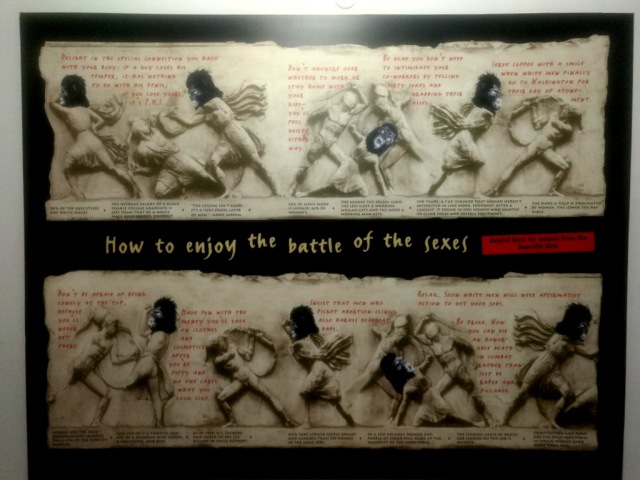
Yet another exploitation story was one which again featured a clothesline – Sue Williamson’s ‘One Hundred and Nineteen Deeds of Sale’ (Aspin Wall). The artist discovered transaction records in Cape Town that account the enslavement of Indians in the 17th century, who were brought to Africa by the Dutch East India company. She sourced the linen traditionally worn by the working class and then inscribed the details the information from the archives.The shirts fluttered idyllically in the sun and only as I drew near that I realized what they depicted. The years seemed to compress and the physical cloth bearing the details of each slave made the past almost tangible.
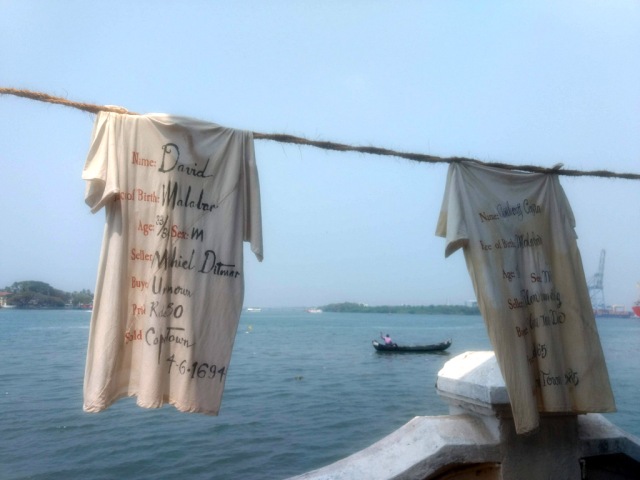
One of the most touching installations was ‘The World of Dew’ by Chandan Gomes (Aspin Wall) where the artist found an old sketchbook of a deceased girl in a hospice in Jaipur and he journeyed all over India to click photographs of the places she had imagined in them, but probably never been to.
A hard-hitting installation was Canes of Wrath by B.V.Suresh which showcases the rise of sectarian ideas and communal violence, all using the environment created in a single room. This is an installation, where no picture would do justice as one has to stand there absorbing the sight and sounds and let the feeling wash over you. This was a great artistic success, as in that room, there were no words necessary to communicate the feeling experienced by the artist.
The Srinagar Biennale in TKM Warehouse was a very moving piece, showcasing the plight of common people in Kashmir. The mute photographs were windows to a people living on hope, despair and finally a resigned helplessness.
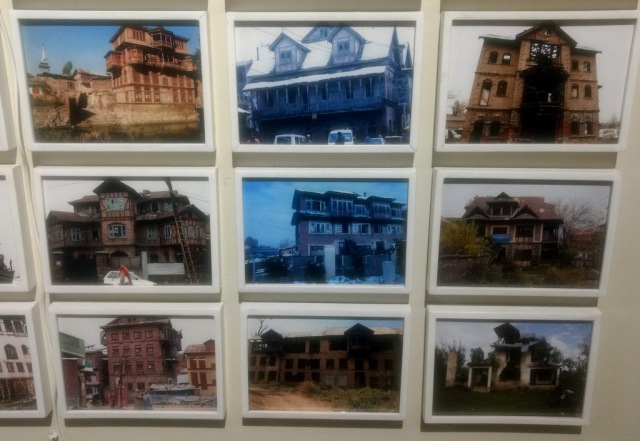
One from Hina Aarif was heart rending as she writes –
“With every child you murder,
with every scoop of the shovel,
with every shroud covered with this soil,
With every body under the sod,
With all my people wailing helplessly.
I swell up in rage,
I swell with strength,
I swell with the deadly rush of fearlessness
with every bullet in my chest
with every grain of soil slipping out, my fear escapes too.”
xxx
I liked the little treasures I unearthed in the student biennales and the various collateral projects.
‘Thought is also matter’ was a collateral project ideated based on Candace Beebe Pert, an american neurologist’s discovery. She established a positive link between what we think, what we feel and what is happening to our bodies.Her research revealed that neuro- peptides, chemical messengers created by most cells in the body, dictates what we think and feel. Neuro-peptides is also matter and thereby, thought is also matter came forth. All the installations here, in some way capture this ephemeral essence. I liked one installation the best, which is a room filled with various disjoint pieces of terracotta hanging from the ceiling, as if caught in a moment of time , yet swaying to an ethereal music.
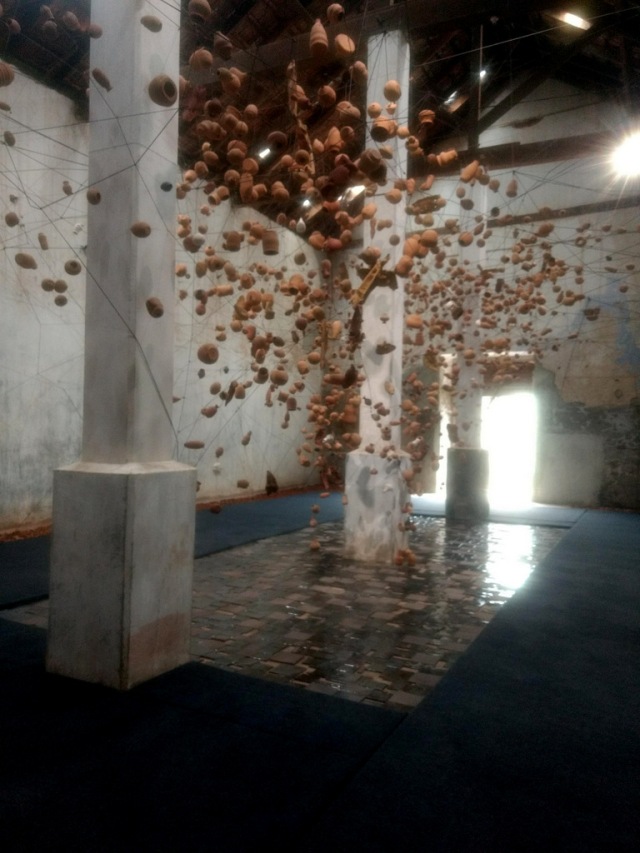
The International Photography Exhibition, also a collateral project, is also not to be missed. It features the stark photos photographed by Giles Clarke based on humanitarian and conflict issues. A small severely malnourished child standing on a hospital bed in Yemen , an injured soldier with his face horribly disfigured raises a hand in salute from a hospital bed in Yemen, the Gang cages of El Salvador – each photo is a story in itself and sucks you into different lives. For that moment in time, you experience a small part of the world they live in and shudder.

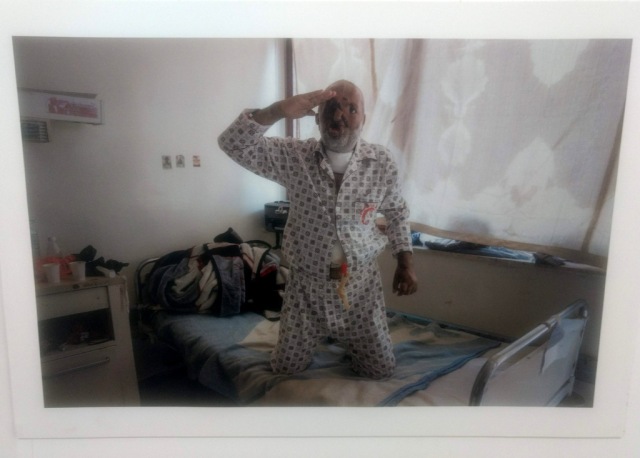
There were so many more thought provoking pieces , that to cover all the ones I liked exhaustively would be beyond the scope of this post. In those two full days of Biennale, the concerns of the everyday life seemed very far away. Its hard to do justice to the experience of visiting the Biennale through these handful of pictures which convey a two dimensional depiction and does a very poor representation of the immersive experience, that it is otherwise meant to be.However, I leave you with a small collage of some pictures.
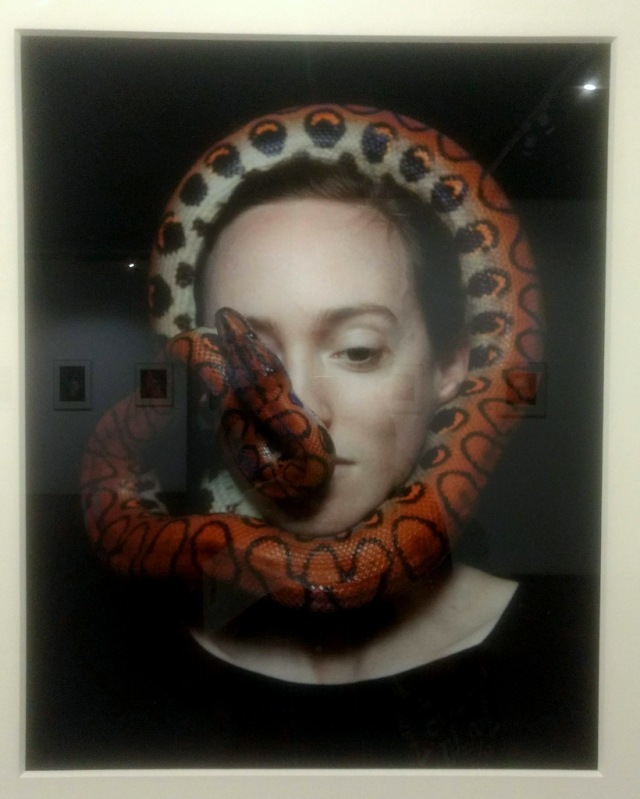


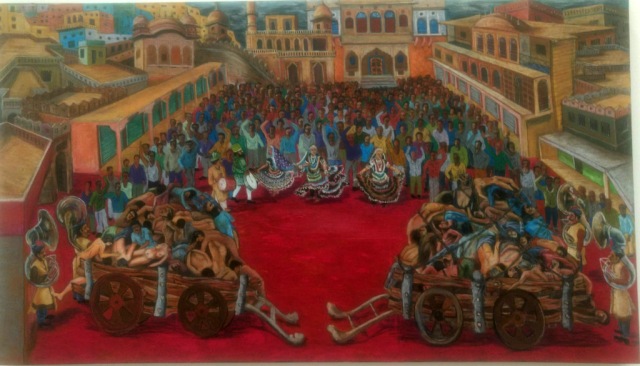
Walking along Fort Kochi , is itself a refreshing experience with small cafes and interesting alleys.
 Au Revoir !
Au Revoir !
#kmb2018
















